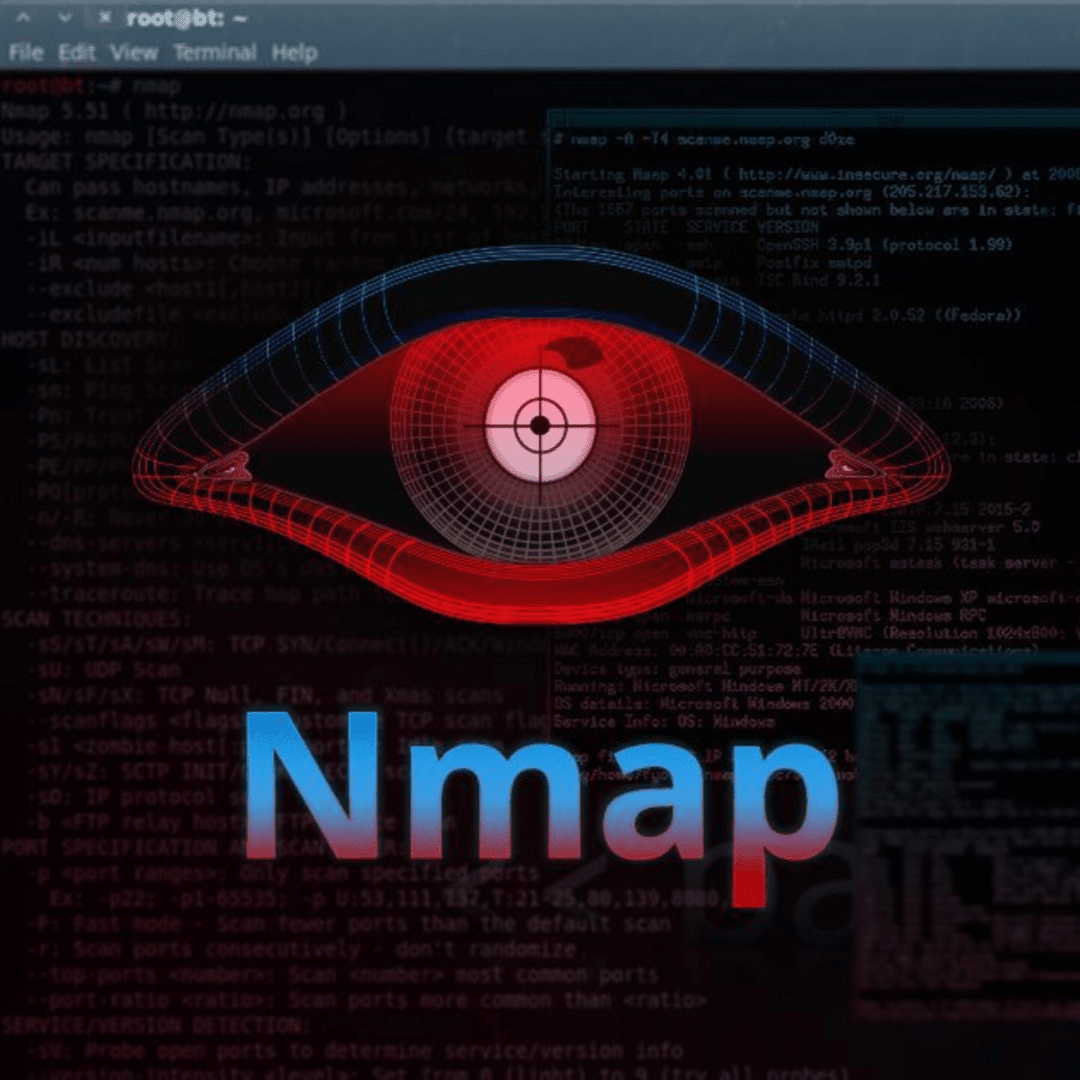Nmap
Tool for network discovery, security auditing, and vulnerability assessment, used to scan networks and systems for open ports, running services, and potential vulnerabilities

Nmap, short for Network Mapper, is a powerful open-source tool for network discovery, security auditing, and vulnerability assessment. It is widely used by security professionals, system administrators, and network engineers to scan networks and systems for open ports, running services, and potential vulnerabilities.
Key Features
1. Network Discovery
- Discovers live hosts, IP addresses, and devices on a network.
- Provides detailed information about devices, such as operating systems and MAC addresses.
2. Port Scanning
- Scans open and closed ports on target systems.
- Supports different scanning techniques, including TCP, UDP, and SYN scans.
3. Service and Version Detection
- Identifies services (e.g., HTTP, SSH) running on open ports.
- Detects software versions to help pinpoint potential vulnerabilities.
4. Operating System Detection
- Determines the operating system and its version on target systems.
- Uses TCP/IP fingerprinting for accurate results.
5. Scriptable with NSE (Nmap Scripting Engine)
- Leverages scripts to detect vulnerabilities, misconfigurations, and security issues.
- Includes pre-built scripts for tasks like brute-forcing, vulnerability scanning, and malware detection.
6. Flexible and Extensible
- Supports scanning in diverse environments, including IPv4, IPv6, and firewalled networks.
- Easily configurable for customized scans.
7. Output and Reporting
- Generates detailed reports in formats like plain text, XML, and HTML.
- Allows easy integration with other tools and automation workflows.
Use Cases
- Network Inventory: Discover and document all devices and services in a network.
- Vulnerability Assessment: Identify open ports and services that may be exploitable.
- Firewall Testing: Verify firewall configurations and ensure no unintended open ports.
- Compliance Auditing: Assess networks for compliance with security policies.
- Penetration Testing: Use as part of reconnaissance during penetration tests.
How It Works
- Install Nmap: Download and install Nmap on your system (Linux, macOS, or Windows).
- Define Targets: Specify the IP address, hostname, or network range to scan.
- Choose Scanning Options: Select the desired scan type and configure additional parameters.
- Run the Scan: Execute the scan and wait for results.
- Analyze Results: Review open ports, running services, and other findings to assess risks.
Common Scan Types
- Basic Scan:
nmap <target>
- Scan All Ports:
nmap -p- <target>
- Service and Version Detection:
nmap -sV <target>
- OS Detection:
nmap -O <target>
- Aggressive Scan:
nmap -A <target>
- Use Nmap Scripting Engine (NSE):
nmap --script=<script_name> <target>
Advantages
- Free and open-source, with active community support.
- Versatile tool for various network and security tasks.
- Highly customizable with a large library of scripts.
- Lightweight and works efficiently in diverse environments.
Limitations
- Requires technical expertise to interpret results effectively.
- Can generate a large volume of data in complex environments.
- Scans on firewalled or heavily filtered networks may produce incomplete results.
Nmap is an indispensable tool for network and security professionals. Its versatility, extensibility, and reliability make it a cornerstone in the fields of network discovery, vulnerability assessment, and penetration testing.
> Visit Nmap Website <
